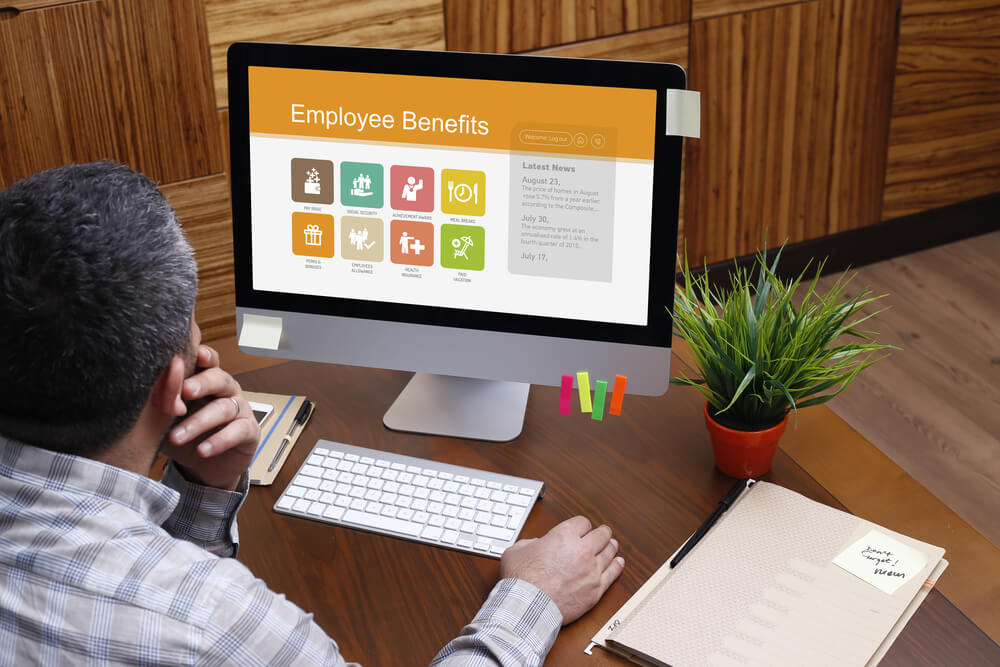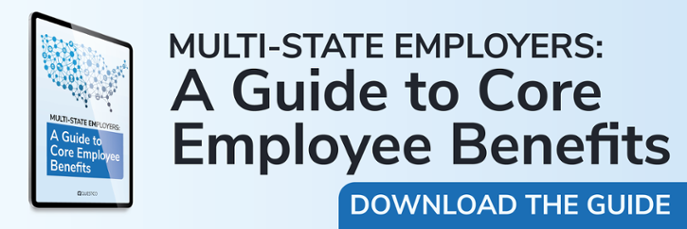Topic Employee Benefits,
9 Ways to Educate Employees about their Benefits

August 18, 2023 | By Questco Companies

A robust employee benefits package is critical to retaining top talent.
But what good are these benefits if employees don’t fully understand them? The truth is, benefits are only as valuable as employees perceive them to be.
Understanding the intricacies of health insurance, retirement plans, and other benefits is no easy task. This lack of understanding can lead to underutilization of benefits, which can impact employee satisfaction and retention.
That means it is not enough to simply offer benefits; it’s equally important to ensure that employees understand and appreciate the value of these benefits.
Below are nine effective methods to communicate employee benefits. From traditional methods like employee handbooks and orientation sessions to innovative approaches like online resources and peer-to-peer education, we’ll delve into how each method can be used to enhance employees’ understanding of their benefits.
How to Communicate Benefits Information
There are countless ways to explain how employees can take advantage of their benefits. Here are nine popular sources for benefits information.
- Employee Handbook: The employee handbook serves as the cornerstone of benefits communication. It’s the go-to resource where employees can find detailed information about their benefits. To make it effective, ensure it’s written in clear, easy-to-understand language and covers all your company’s benefits. Remember, a well-crafted handbook can significantly enhance employees’ understanding of their benefits.
- Orientation Sessions: Orientation is the perfect time to introduce new hires to the company’s benefits. During these sessions, you can walk them through the benefits package, explaining each component in detail. This initial introduction sets the stage for employees to make the most of their benefits from day one.
- Workshops and Seminars: Hosting workshops or seminars on specific benefits topics can be incredibly beneficial. For instance, a workshop on retirement planning can help employees understand how to maximize their 401(k) contributions. These sessions can be interactive, allowing employees to ask questions and gain a deeper understanding of their benefits.
- One-on-One Meetings: Personalized discussions about benefits can be invaluable. Offering one-on-one meetings with a human resources representative or benefits specialist allows employees to ask specific questions and discuss their individual needs. This personalized approach can significantly enhance employees’ understanding and utilization of their benefits.
- Online Resources: In today’s digital age, online resources are a must. Providing articles, videos, and FAQs on a dedicated benefits website or company intranet allows employees to access information at their convenience. This flexibility can lead to increased engagement with benefits materials.
- Benefits Portal: A benefits portal is an excellent tool for benefits education. Employees can view and manage their benefits, and the portal can also house educational resources. The key is to ensure the portal is user-friendly and contains up-to-date, relevant information.
- Email Communications: Regular email updates can keep benefits in employees’ minds. These updates can include reminders about enrollment periods, changes to benefits, or tips on how to use benefits effectively. Just remember to keep emails concise and engaging to maximize their impact.
- Webinars: Webinars offer a dynamic way to educate employees about their benefits. They can be recorded and made available for employees to watch at their convenience, making them a flexible learning tool. Plus, webinars can cover various topics, from an overview of health insurance benefits to a deep dive into wellness programs.
- Peer-to-Peer Education: Learning from colleagues can be a powerful tool. A mentorship or buddy system where new employees learn about benefits from more experienced colleagues can foster a culture of shared knowledge and support.

Best Practices for Benefits Communication
Effective communication is the cornerstone of any successful benefits program. Here are some best practices to keep in mind.
Firstly, keep communication clear and jargon-free. Benefits can be complex, but that doesn’t mean communication should be. Use plain language and avoid industry jargon as much as possible. If technical terms must be used, ensure they’re clearly defined. This approach makes it easier for employees to understand their benefits and how to use them.
Secondly, be responsive to questions. Employees will undoubtedly have queries about their benefits. Providing channels for these questions to be asked and answered promptly is crucial. This could be through a dedicated email address, a hotline, or regular Q&A sessions.
Lastly, regularly update and remind employees about their benefits. Benefits communication shouldn’t be a one-time event. Regular updates, especially during key times like enrollment periods, keep benefits top of mind for employees. Additionally, reminders can help ensure that employees are making the most of their benefits.
Effective benefits communication is about more than just conveying information. It’s about fostering understanding, promoting usage, and enhancing employee satisfaction and retention.
But it’s important to remember that while these methods and best practices are valuable, the work doesn’t stop here.
The Power of Effective Benefits Communication
Communication remains a cornerstone of success. You can bridge the knowledge gap by implementing strategies such as comprehensive handbooks, orientation sessions, workshops, one-on-one meetings, online resources, benefits portals, email communications, webinars, and peer-to-peer education.
Remember, clear and consistent communication can lead to higher benefits utilization, improved employee satisfaction, and, ultimately, a more engaged and productive workforce. So, take a moment to evaluate your current benefits communication strategy and consider how these methods could enhance your approach. The investment in education today can yield significant dividends in the future.




